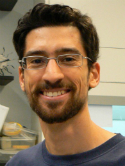| Authors: |
Zheng, H. F.; Forgetta, V.; Hsu, Y. H.; Estrada, K.; Rosello Diez, A.; Leo, P. J.; Dahia, C. L.; Park-Min, K. H.; Tobias, J. H.; Kooperberg, C.; Kleinman, A.; Styrkarsdottir, U.; Liu, C. T.; Uggla, C.; Evans, D. S.; Nielson, C. M.; Walter, K.; Pettersson-Kymmer, U.; McCarthy, S.; Eriksson, J.; Kwan, T.; Jhamai, M.; Trajanoska, K.; Memari, Y.; Min, J.; Huang, J.; Danecek, P.; Wilmot, B.; Li, R.; Chou, W.; Mokry, L. E.; Moayyeri, A.; Claussnitzer, M.; Cheng, C. H.; Cheung, W.; Medina-Gomez, C.; Ge, B.; Chen, S. H.; Choi, K.; Oei, L.; Fraser, J.; Kraaij, R.; Hibbs, M. A.; Gregson, C. L.; Paquette, D.; Gardiner, A.; Cremin, K.; Auer, P.; Hsu, L.; Ring, S.; Tung, J. Y.; Thorleifsson, G.; Enneman, A. W.; van Schooer, N. M.; de Groot, L. C. P. G. M.; van der Velde, N.; Melin, B.; Kemp, J. P.; Christiansen, C.; Sayers, A.; Zhou, Y.; Calderari, S.; van Rooij, J.; Carlson, C.; Peters, U.; Berlivet, S.; Dostie, J.; Uitterlinden, A. G.; Williams, S. R.; Farber, C.; Grinberg, D.; LaCroix, A. Z.; Haessler, J.; Chasman, D. I.; Giulianini, F.; Rose, L. R.; Ridker, P. M.; Eisman, J. A.; Nguyen, T. V.; Center, J. R.; Nogues, X.; Garcia-Giralt, N.; Launer, L. L.; Gudnason, V.; Mellstrom, D.; Vandenput, L.; Amin, N.; van Duijn, C. M.; Karlsson, M. K.; Ljunggren, O.; Svensson, O.; Hallmans, G.; Rousseau, F.; Giroux, S.; Bussiere, J.; Arp, P. P.; Koromani, F.; Prince, R. L.; Lewis, J. R.; Langdahl, B. L.; Hermann, A. P.; Jensen, J. E. B.; Kaptoge, S.; Khaw, K. T.; Reeve, J.; Formosa, M. M.; Xuereb-Anastasi, A.; Akesson, K.; McGuigan, F. E.; Garg, G.; Olmos, J. M.; Zarrabeitia, M. T.; Riancho, J. A.; Ralston, S. H.; Alonso, N.; Jiang, X.; Goltzman, D.; Pastinen, T.; Grundberg, E.; Gauguier, D.; Orwoll, E. S.; Karasik, D.; Davey-Smith, G.; AOGC Consortium; Smith, A. V.; Siggeirsdottir, K.; Harris, T. B.; Zillikens, M. C.; van Meurs, J. B. J.; Soranzo, N.; Durbin, R.; Wilson, S. G.; Ntzani, E. E.; Brown, M. A.; Stefansson, K.; Hinds, D. A.; Spector, T.; Cupples, L. A.; Ohlsson, C.; Greenwood, C. M. T.; UK10K Consortium; Jackson, R. D.; Rowe, D. W.; Loomis, C. A.; Evans, D. M.; Ackert-Bicknell, C. L.; Joyner, A. L.; Duncan, E. L.; Kiel, D. P.; Rivadeneira, F.; Richards, J. B. |
| Article Title: |
Whole-genome sequencing identifies EN1 as a determinant of bone density and fracture |
| Abstract: |
The extent to which low-frequency (minor allele frequency (MAF) between 1-5%) and rare (MAF ≤ 1%) variants contribute to complex traits and disease in the general population is mainly unknown. Bone mineral density (BMD) is highly heritable, a major predictor of osteoporotic fractures, and has been previously associated with common genetic variants, as well as rare, population-specific, coding variants. Here we identify novel non-coding genetic variants with large effects on BMD (ntotal = 53,236) and fracture (ntotal = 508,253) in individuals of European ancestry from the general population. Associations for BMD were derived from whole-genome sequencing (n = 2,882 from UK10K (ref. 10); a population-based genome sequencing consortium), whole-exome sequencing (n = 3,549), deep imputation of genotyped samples using a combined UK10K/1000 Genomes reference panel (n = 26,534), and de novo replication genotyping (n = 20,271). We identified a low-frequency non-coding variant near a novel locus, EN1, with an effect size fourfold larger than the mean of previously reported common variants for lumbar spine BMD (rs11692564(T), MAF = 1.6%, replication effect size = +0.20 s.d., Pmeta = 2 × 10-14), which was also associated with a decreased risk of fracture (odds ratio = 0.85; P = 2 × 10-11; ncases = 98,742 and n controls = 409,511). Using an En1 cre/flox mouse model, we observed that conditional loss of En1 results in low bone mass, probably as a consequence of high bone turnover. We also identified a novel low-frequency non-coding variant with large effects on BMD near WNT16 (rs148771817(T), MAF = 1.2%, replication effect size = +0.41 s.d., Pmeta = 1 × 10-11). In general, there was an excess of association signals arising from deleterious coding and conserved non-coding variants. These findings provide evidence that low-frequency non-coding variants have large effects on BMD and fracture, thereby providing rationale for whole-genome sequencing and improved imputation reference panels to study the genetic architecture of complex traits and disease in the general population. © 2015 Macmillan Publishers Limited. All rights reserved. |
| Keywords: |
signal transduction; adult; controlled study; fracture; unclassified drug; gene sequence; human cell; major clinical study; single nucleotide polymorphism; nonhuman; animal cell; mouse; animal experiment; genetic association; genetic variability; genotype; gene frequency; risk factor; bone density; gene identification; gene loss; genome; bone mass; homeodomain protein; cre recombinase; wnt protein; meta analysis; gene replication; bone turnover; lumbar spine; effect size; population genetics; loxp site; engrailed 1 protein; exome; human; priority journal; article; whole genome sequencing; wnt16 protein
|
| Journal Title: |
Nature
|
| Volume: |
526 |
| Issue: |
7571 |
| ISSN: |
0028-0836 |
| Publisher: |
Nature Publishing Group
|
| Date Published: |
2015-10-01 |
| Start Page: |
112 |
| End Page: |
117 |
| Language: |
English |
| DOI: |
10.1038/nature14878
|
| PROVIDER: |
scopus
|
| PUBMED: |
26367794
|
| PMCID: |
PMC4755714
|
| DOI/URL: |
|
| Notes: |
Export Date: 2 November 2015 -- Source: Scopus |





